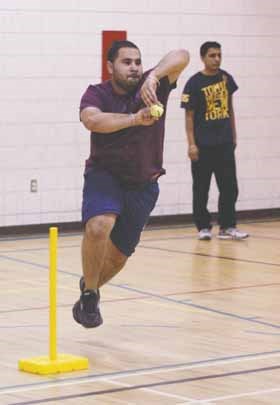There are fewer speakers of non-official languages in Yorkton today than there were five years ago according to the latest census results released by Statistics Canada last week.
In 2011, 1,920 people reported their mother tongue was not English or French compared to 2,020 in 2006 despite a four per cent increase in the overall number of responses.
This result bucks a Canadian trend that shows decreasing dominance of English and French as residents' first languages.
The trend makes perfect sense considering two-thirds of Canada's population expansion is currently attributed to immigration. In fact, many demographers predict within 50 years population growth will rely exclusively on immigration with Canada's birth rate lagging behind its death rate.
English, of course, continues to dominate Yorkton's population as a native tongue at 85.3 per cent, up very slightly from 2006 when it was 84.9 per cent.
In Yorkton, native French speakers are still a small minority at less than one per cent of the population. Nevertheless, Canada's other official language did make significant gains growing by 26 per cent over 2006.
Furthermore, in the last census, none of the French-first population reported it was the language most spoken at home whereas 20 people report it is in the current stats.
Not surprisingly, Ukrainian is the second most common mother tongue and language spoken at home in Yorkton, although it saw a significant decrease from 1,260 to 965 native speakers. Exactly the same number of people (100) reported primarily speaking Ukrainian at home in this census as the last.
While there are fewer native speakers of non-official languages, more people reported non-official languages as being their most commonly spoken at home at 400 versus 250.
That increase can be attributed almost entirely to Filipino immigration. In the five years between censuses, the number of people claiming Tagalog as their native tongue exploded from 10 to 145, 95 of whom use it as their primary language at home. Other Filipino languages (Bisayan) add another five to that total.
First Nations languages took a serious hit. Only 45 people reported Aboriginal languages as their mother tongue in 2011 compared to 80 in 2006. Of the 45, just five speak it at home. According to Madeleine Whitehawk, who is spearheading a local effort to save First Nations tongues, the elders are dying and the youth are not engaged.
Depending on the source, the Aboriginal population of Yorkton hovers around 12 per cent, but speakers of First Nations languages only account for three-tenths of one per cent.
In total, there are at least 38 languages spoken in Yorkton.
Not including English, Ukrainian, French, Filipino and Aboriginal languages already discussed, European languages make up the lion's share of remaining households at 3.6 per cent of the city's population.
Next are Asian languages at 1.4 per cent followed by those who claim more than one native tongue (1.3%). Languages from the Indian subcontinent (India, Pakistan and Bangladesh), African languages and others make up the last one per cent.




